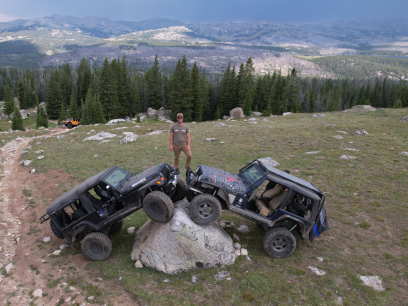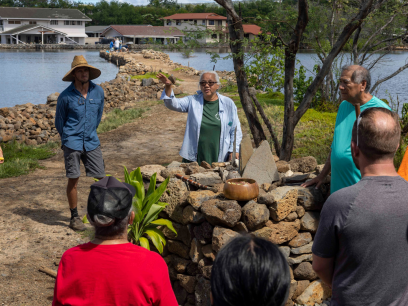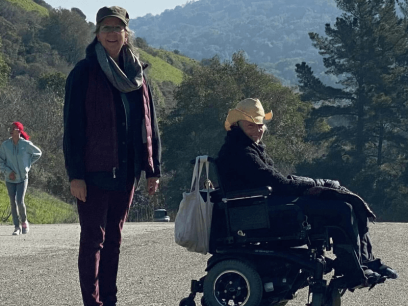
Nature is noisy. A happy and healthy outdoors squawks and sings, warbles and wooshes, clatters and creaks. Those same sounds also keep humans happy and healthy, and this is especially true for the visually impaired.
Nature in Surround Sound
In an innovative new collaboration with the Atlantic Center for the Arts, the Young Sound Seekers program hosts students from the Conklin Davis Center for the Visually Impaired in Daytona Beach on monthly visits to Canaveral National Seashore and surrounding national parks. There, blind or partially blind young learners are guided through the park by sighted professors and students from Stetson University in DeLand, Fla. In a series of listening and field recording activities that teach the value of conserving the natural soundscape, the students, already experts in using their sense of hearing to interpret their world, are given an enhanced listening experience, creating “audio postcards” and other broadcast materials to help share their perception for the benefit of everyone.
“The water is calming and peaceful,” says one student. “One of my favorite sounds was the bubbling of the mangroves,” says another. Thanks to a submersible hydrophone, the students can listen to one of the 4,000 local species living below the surface in under four feet of water. “It was nice to hear the popping shrimp, just popping, moving their tails,” says one of the Sound Seekers of the hydrophone experience. “It sounds like a crab snapping its claws.” Chirping birds, dashing fish, and plants swaying in the wind are just a few pieces of the marine soundscape at Canaveral.
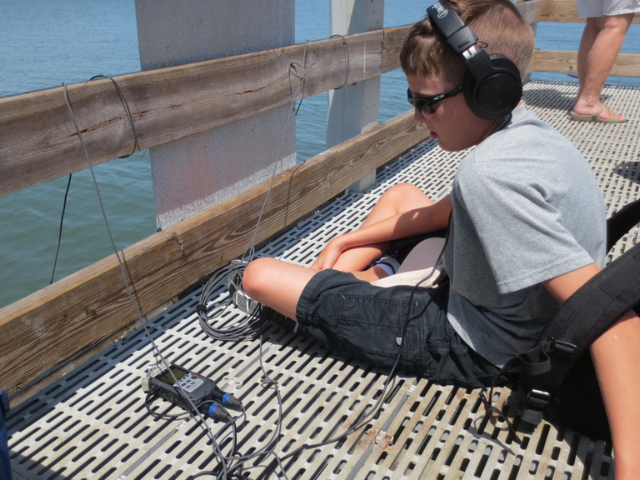
Access for All
Public lands serve the public good and increasing accessibility to them is the focus of the awardees of a 2022 Driving Mobility and Accessibility on Public Lands Grant. Toyota Motor North America (Toyota) is making a $250 donation to National Environmental Education Foundation (NEEF) for each 2022 Toyota Sienna Woodland Edition sold, with a guaranteed minimum donation of $250,000.
Eight programs each received up to $20,000 for mobility and accessibility projects that follow the principles of Inclusive Universal Design and go beyond the minimum guidelines of the Americans with Disabilities Act (ADA). Other projects include physical mobility solutions to access beaches, parks and recreation areas, as well as assessment projects on public lands of historic significance, such as the Wright Brothers National Memorial in Manteo, North Carolina. For over 25 years, NEEF and Toyota have partnered to support NEEF’s goal to form more meaningful connections between the environment and the public.
“The Driving Mobility and Accessibility on Public Lands Grant expands the longstanding partnership between Toyota and NEEF that has been supporting projects that make our public lands and waters more accessible, inclusive and enjoyable for people of all abilities,” says Sara Espinoza, Vice President, Programs, NEEF.
From September through May, 30 students from Conklin Davis and between 5-10 adults combined from Stetson University, Atlantic Center for the Arts and Conklin Davis visit the Canaveral National Seashore each month. In June, for a seven-day camp session, 30 total sighted and non-visual students will participate in the Young Sound Seekers Lab with three trips to Canaveral. The resulting audio productions with field recordings and narrative will be posted online, available to a global audience.

The Sound of Science
For a group often excluded from participating in traditional conservation efforts, such as site cleanups, Young Sound Seekers invites the Conklin students into the effort to preserve the sounds of nature, also known as “soundscape ecology.” As the world learned when human sound was hushed during the lockdowns of the pandemic, for many species to thrive, nature’s “speech” must be heard clearly.
Critical to the program’s success is its inclusive approach to learning. According to Andy Slater, president of the Society of Visually Impaired Sound Artists, and one of the instructors for the Young Sound Seekers Audio Lab summer camp, a key element is that the education provided isn’t wholly dependent on a sighted guide to make the experience, the way it would be with a museum visit. The lessons of nature’s soundscape are available to all.
“The opportunity for visually impaired people to learn alongside sighted students helps dispel stereotypes and misunderstanding. This inclusion is a first step in fighting Ableism and erasing the stigma of blindness and disability,” says Slater.
Access, though, can mean so much more than simply facilitating an encounter with nature. The Young Sound Seekers program is also a pathway for the blind or partially sighted to contribute to their communities. Eve Payor, Director of Community Programs at Atlantic Center for the Arts, explains that the platform, “advocates for artistic creativity and environmental stewardship. Science informs art, and art communicates science in such a way that the public can better understand its complexities. Giving young people an opportunity to learn creative thinking can lead to innovative solutions to environmental issues such as noise interference in the soundscape.” This direct link to STEAM education offers new possibilities to all students who participate, sighted and visually impaired.
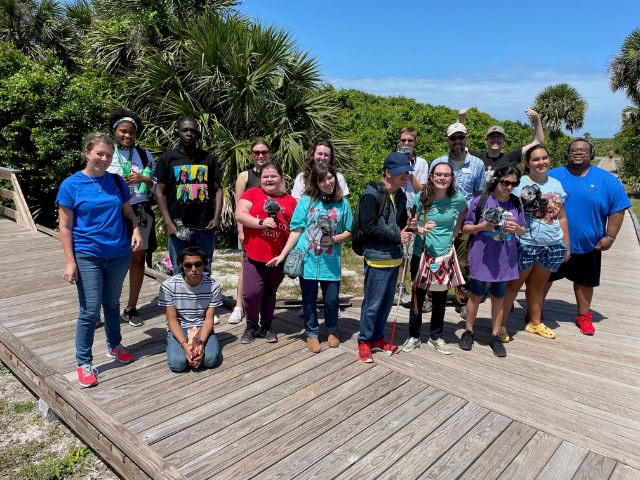
Voices of the Future
To meet the world’s challenges, erasing traditional boundaries is essential. “By serving the whole person, the Young Sound Seekers program nurtures diverse talent and encourages the development of critical thinking needed to help society build its future,” says Sean Suggs, group vice president and chief social innovation officer, Toyota Motor North America. “Expanding what’s possible is a core belief at Toyota. Reducing the barriers that prevent movement, whether through education or mobility solutions, are central to the mission.” It’s in this connection to education through mobility and inclusion that the grants fulfill their true intent: to create limitless possibilities for all.
And while the Young Sound Seekers are given new ways to engage with nature, they have an important lesson of inclusivity for us too. Part of nature’s power is in something none of us can see—its sound.
To hear the Young Sound Seekers audio postcards, please visit here.
This story was reproduced in its entirety with permission from Toyota Motor North America. Original story can be found here.
